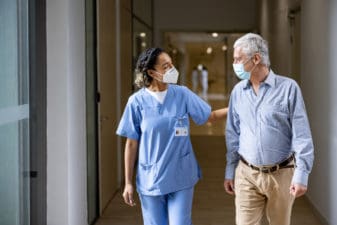In general, there are two types of debt that Canadians tend to carry. First is non-mortgage debt, which includes unpaid credit cards and other existing lines of credits. This has increased by 1% and is now averaging up to $23,800. The trend has been different from province to province, with Quebec leading at 2.03%, and Alberta in th rear with -1.46%.
The second and the most prevalent debt is, of course, the mortgage. Most Canadians have a fixed mortgage, which has become part of their monthly expenses. There is a way to reduce or fast track that debt as well, but it’s not for everybody. If your fixed (or any other type) mortgage has a prepayment option, you can increase the amount of your monthly mortgage payment, and start building the equity on your home faster.
But if your closed mortgage lender hasn’t provided a provision for you to prepay, doing so may incur a penalty. Most people plan their mortgages properly, and only take a mortgage that they can pay off in the future. So considering that debt part of your life seems relatively normal.
However, having a consistent non-mortgage debt hanging over your head might be a bigger problem than many people realise.
Spend less
Credit card debt or other non-mortgage debt like a loan for your car are usually considered bad debts. A mortgage is considered good debt because it is going toward an asset that’s appreciating in value.
The simplest way to reduce your overall debt is to spend less. Or more precisely, exercise some financial discipline while you are spending, and be prompt in paying off your credit cards.
First of all, avoid cash advances whenever you can. It might be better to borrow from a friend or even open a line of credit than to take out a cash advance. Most cash advance interest rates are around 23%, and there is no grace period for them. Your interest will start accumulating from the moment you take out a cash advance.
Secondly, stay within an allocated area of your total credit limit. It’s called a credit utilization ratio, and a good rule of thumb is staying under 30% of your credit limit. A good way to control this it is to set up your credit card to pay for certain necessities, like utility bills, automatically. Then use cash or debit cards to pay for other expenses. You will stay within a safe credit utilization range, and you will be able to keep better track of your spending.
Third, try to start paying your credit cards on a bi-monthly basis. The typical grace period, before you are liable for interest, falls somewhere between 21 to 30 days. Developing a habit of paying off before the grace period is over will keep your non-mortgage debt to a minimum.
Earn more
This is easy to say and hard to do. But earning more doesn’t just mean finding another job or starting a side business. You can earn more by investing. Consider buying in a good company like Goeasy (TSX:GSY), a newly established dividend aristocrat. The company has increased its payouts by 350% since 2015 (from $0.1 per share to $0.45 per share).
Due to the constantly increasing share price, the dividend yield of Goeasy had stayed low. The recent market downturn, however, has changed that. Currently, the company is trading 32% below its yearly high, at $53.5 per share. This translates to a decent yield of 3.5%.
It’s also a fast-growing stock, with a five-year compound annual growth rate of 22.4%. If you only put $250 a month in this company and it keeps growing at the same rate, you may have a $285,358 nest egg in 15 years. That’s almost four times the average Canadian debt.
Foolish takeaway
It’s easy to consider debt a part of your daily life. But if you don’t keep up with it, your debt might grow beyond your ability to control. And the worst part is that a lot of the debt is simply the interest that you pay for not paying off your credit on time. So exercise some financial control over your spending, and try investing more to stay ahead of your debt.








